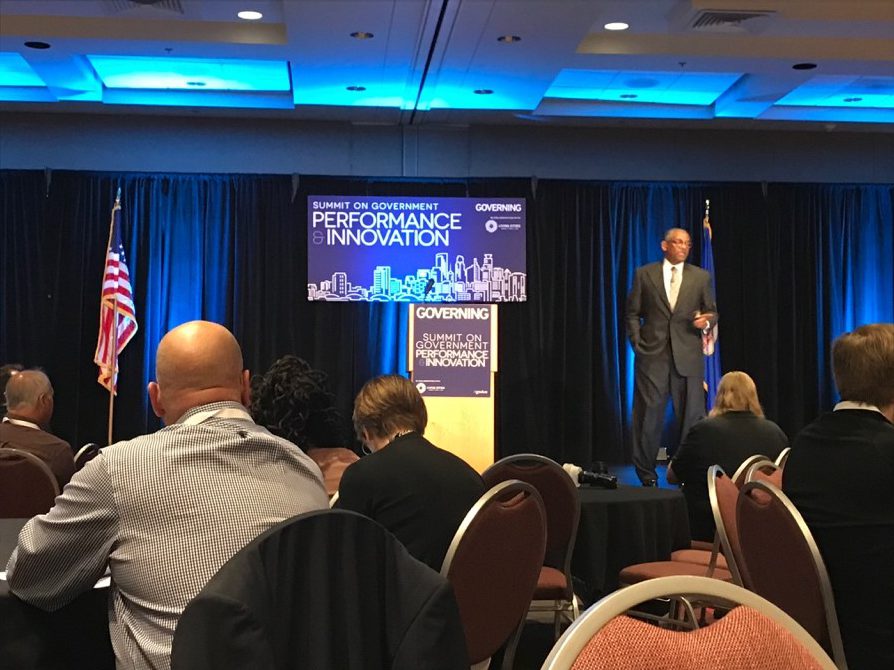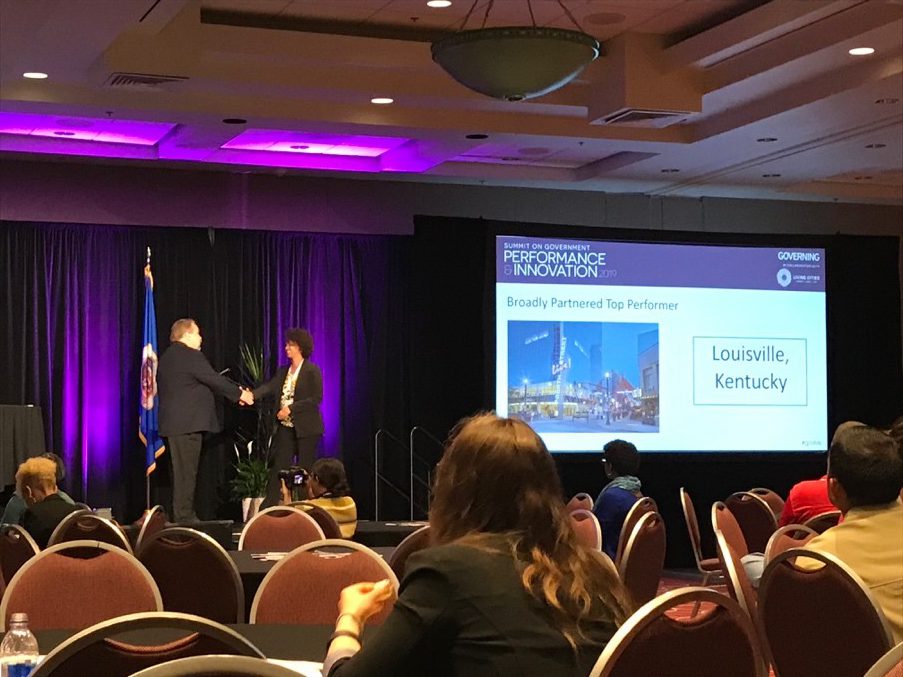A couple of weeks ago (June 4th – 6th), I attended the Summit on Government Performance and Innovation in Minneapolis, which is organized by Governing and has been held annually since 2015. This is the second time I represented NASPO at this event to learn about the innovative initiatives of cities and governments around the country and bring that information back to NASPO members. Demographics, inclusive procurement and challenging the status quo were just some of the topics discussed. These innovative topics helped to set the tone for modernizing the way government does business. This conference highlighted the creative solutions governments are using to address a changing world.
Demographics Will Transform How Government Operates
One theme that was clear throughout the Summit is the growing impact of diversity on government performance. This was highlighted by the keynote given by James H. Johnson, Ph.D. to kick-off the Summit. Dr. Johnson discussed the demographic changes happening across the US, all of which will impact the way the country functions. While everything he touched on will impact procurement in some way, I will discuss just a couple of examples that stood out.
The first trend is a major geographic redistribution of the American population to the South. In every decade since 1970, the South has seen over half of the nation’s net population growth. For example, between 2010 and 2017, the South’s population grew by 9.2 million, an increase of 55% of the nation’s total net growth. Newcomers are attracted to the area due to the warmer climate, lower cost of living and education and business opportunities. However, the South has not seen this growth evenly dispersed: over 75% of the region’s population growth has been centered in five magnet states – Texas, Florida, Georgia, North Carolina, and Virginia.
As populations move to the South, talent and tax revenue are leaving other regions of the country. If a small group of states are attracting the majority of new talent and population growth, then other  areas will suffer, and procurement will play an integral role on both sides to deal with these issues. Some states may see declining budgets as a result, putting strain on procurement to find even more cost savings, while others may be forced to find creative procurement solutions to deal with their rapidly expanding population. Procurement’s best defense is to look ahead and understand the trends impacting their state and take steps to get out in front of these impending changes as much as possible.
areas will suffer, and procurement will play an integral role on both sides to deal with these issues. Some states may see declining budgets as a result, putting strain on procurement to find even more cost savings, while others may be forced to find creative procurement solutions to deal with their rapidly expanding population. Procurement’s best defense is to look ahead and understand the trends impacting their state and take steps to get out in front of these impending changes as much as possible.
Another trend is the overall change in race/ethnic composition of the US population, as well as the increase in overall average age and life expectancy. According to Dr. Johnson, from 2010 to 2017, the total US population grew 5.6%, of which 91% came from non-white populations. At the same time, the overall life expectancy among the nation’s senior population has grown, fertility rates among white females have declined, and the Baby Boomer generation has begun turning 65 at a rate of 10,000 per day, resulting in experience and institutional knowledge leaving the workforce at a significant rate.
Procurement will need to deal with all kinds of challenges related to these trends, least of which is the workforce changes as a result of the aging and retiring population. To mitigate the consequences of upcoming trends, procurement offices should ensure they have transition plans and policies for dealing with turnover. Finding creative ways to attract new talent and document institutional knowledge before its gone is also crucial. If you are looking for a place to start in dealing with recruitment and retention, checkout some of the resources NASPO has on the subject, including various workforce resources and eLearning courses available to everyone.
Inclusive Procurement as a Top Priority
One topic I was particularly interested in focused on the role procurement plays in promoting economic equity. During the session, we were given a glimpse at the latest City Accelerator cohort, which is set to tackle the topic of inclusive procurement. Inclusive procurement is all about how a government spends its dollars. This session highlighted standout cities that are leveraging their procurement process and spend to create equitable opportunities, increased competition, and ultimately a more engaged community. This is accomplished through wealth and wage disparity studies, targeted outreach to diverse suppliers, and spreading government spending around to contractors from various communities.
For example, Nashville has become the first southern city to begin certifying LGBT-owned businesses within procurement as part of its supplier diversity initiatives. Kansas City has set up programs to help small businesses register in the state’s procurement system. This echoes what is being done at the state level with preference laws supporting small, minority, women-owned businesses or other historically marginalized populations.
These inclusion-focused initiatives support community and middle-class growth, improve the taxpayer base, and help small businesses flourish. Many of the cities highlighted in this session attributed success to making inclusive procurement a priority above “getting it done fast” or “within budget”. Rethinking procurement and making inclusion a priority can turn communities into magnets for talent. For more examples and a deep-dive into this topic, I highly recommend you check out the detailed implementation guide here.
Challenging The Status Quo
 The last point I will leave you with came from the final session of day one, a session dedicated to Creative CityMaking, which cultivates relationships between city staff and local artists to address issues of disparity in the community. During the session, someone said that government “can’t keep doing things the way we always have and expect different outcomes.” The point rings true: in order to continuously improve, governments must look to challenge the status quo and grow beyond the way things have always been done. Innovation comes in all shapes and forms. As procurement officers, we must constantly be willing to look for ways of continuous improvement and be prepared for the next big innovation in the way governments do business.
The last point I will leave you with came from the final session of day one, a session dedicated to Creative CityMaking, which cultivates relationships between city staff and local artists to address issues of disparity in the community. During the session, someone said that government “can’t keep doing things the way we always have and expect different outcomes.” The point rings true: in order to continuously improve, governments must look to challenge the status quo and grow beyond the way things have always been done. Innovation comes in all shapes and forms. As procurement officers, we must constantly be willing to look for ways of continuous improvement and be prepared for the next big innovation in the way governments do business.
As innovative cities and governments have shown, innovation is about more than just change. It is about data, listening to the needs of the community, and the willingness to try something and fail. More importantly, it is about learning from the mistakes of the past and finding creative solutions to prevent those mistakes from happening again. This is especially true for state and local procurement, who are responsible for ensuring that the trillions spent on government services are spent fairly and within the confines of the law. Attending the Governing Summit was an in-depth look at one of the rising stakeholders in public procurement: innovation and modernization. Climbing this summit won’t be easy. It will require creativity and elevation of the public procurement profession, but it will be worth it to enrich the lives of the people it serves.
